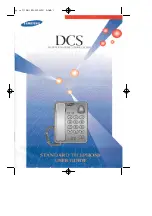
2
Supply
Sensor (S2)
Return
Sensor (S1)
P1
DIP 5 = Off (Linear Output Characteristic)
DIP 3 = Off (Direct Acting)
DIP 1 = On (
∆
T Target)
Off
On
1
2
3
4
5
“00-VS”
The 00-VS adjusts the variable speed output to the P1 pump to maintain a setpoint temperature difference (
∆
T) between the supply
sensor and the return sensor whenever a heat demand is present.
Supply
Sensor (S2)
Return
Sensor (S1)
Condensing
Boiler
P1
DIP 5 = Off (Linear Output Characteristic)
DIP 3 = On (Reverse Acting)
DIP 1 = On (
∆
T Target)
Off
On
1
2
3
4
5
“00-VS”
The 00-VS adjusts the variable speed output to the P1 pump to maintain a setpoint temperature difference (
∆
T) between the supply
sensor and the return sensor whenever a heat demand is present. This control configuration incorporates a minimum variable speed
output percentage during operation. Refer to Minimum Variable Speed Output under the
∆
T Target section for selecting the available
minimum variable speed output percentages.
Supply
Sensor
(S1 or S2)
Cooling
Storage
Tank
P1
DIP 5 = Off (Linear Output Characteristic)
DIP 3 = On (Reverse Acting)
DIP 1 = Off (Setpoint Target)
Off
On
1
2
3
4
5
“00-VS”
The 00-VS adjusts the variable speed output to the P1 pump to maintain a setpoint temperature at the supply sensor whenever a
heat demand is present. This application is typical of radiant cooling system. It is important to note that the 00-VS does not consider
condensation control. Condensation prevention on surfaces must be controlled externally from the 00-VS control.
(Ts)
∆
Ts
(Tb)
Tb = Boiler supply temperature
convectors and 10
°
F for radiant floor heating)
Ts = System supply temperature
∆
Ts = System supply temperature (Typically 20
°
F for
Note 1
Fig. 1
Note 1
Note 2
Note 2
Note 3
Balancing
Valve
Note 3
00-VS
Injection Pump
When the injection pump is turned off, there must be no heat
transfer from the boiler loop to the system loop. In order to avoid
this unwanted heat transfer, primary/secondary piping tech-
niques are used as shown in figure 1.
This piping arrangement requires that the injection piping be at
least one pipe diameter smaller than the piping of the boiler and
system loops. There must be no more than 4 pipe diameters
between the tees in the boiler and system loops (Note 1), in
order to prevent ghost flow when the injection pump is off and
the system or boiler pump is on. Also, there must be at least 6
pipe diameters of straight pipe on either side of the tees (Note 2),
in order to prevent the momentum of water from the boiler and
system loops from pushing flow through the injection loop.
Finally, there should be a minimum of 1 foot drop in the injection
loop in order to create a thermal trap (Note 3) in order to prevent
convective heat transfer through the injection loop.
Variable Speed Injection Mixing
Variable Speed Injection Mixing uses a pump as a mixing device instead of a 2-way, 3-way or 4-way valve. The 00-VS injects hot water
from the boiler loop into the cooler system loop. The speed of the pump is modulated in order to inject different rates of hot water into
the cooler system return water. This allows for virtually any water temperature to be supplied to the heating system. Most boilers cannot
operate at low temperatures, therefore the 00-VS injection pump can be modulated back in order to prevent the boiler from operating at
cold temperatures.
Design Procedure
In order to properly size the pump, follow the design procedure below:
1) Determine the design operating temperatures of the system loop and boiler. (Ts and Tb from figure 1.)
2) Determine the flow rate and design temperature drop (
∆
T: Delta T) in the system loop. If one of these variables is unknown, use
Equation 1 or 2 to determine the other variable.
3) Compute Tb - Ts. Look up the flow rates on figure 2.
4) The design injection flow rate for direct injection is calculated in Equation 3. If the injection flow rate is greater than 40 US GPM, a
3-way or 4-way valve may be required.
00-VS-6
00-VS-5
00-VS-7


























